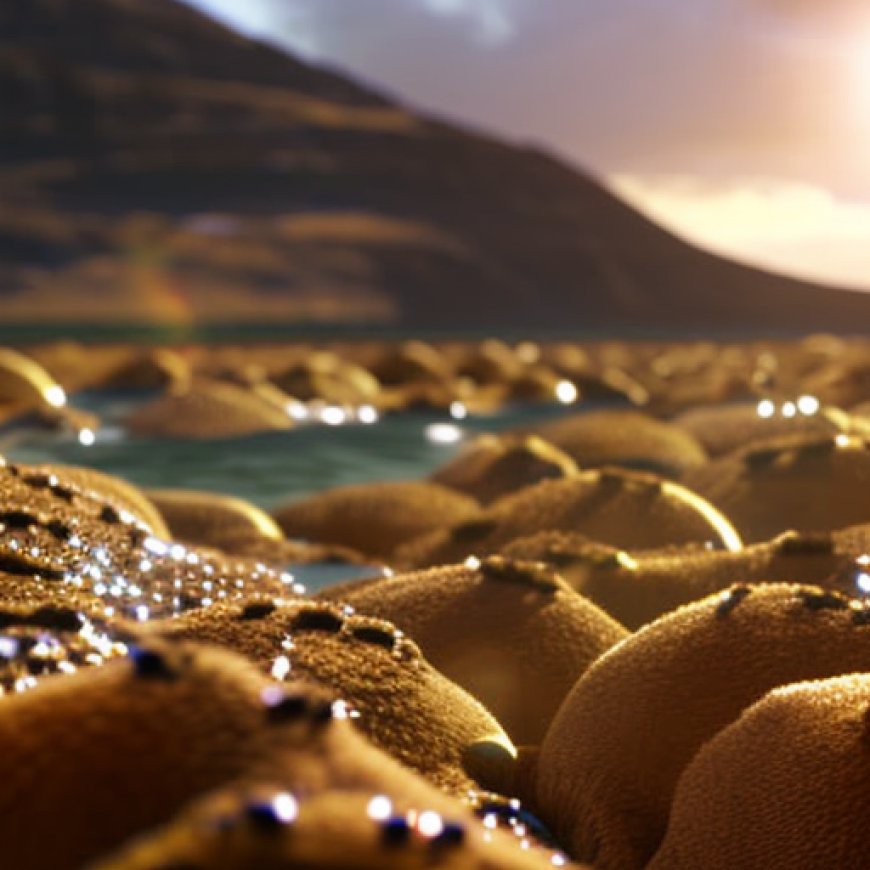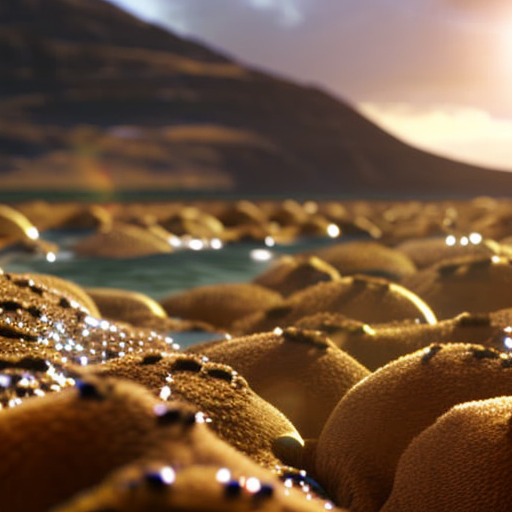As Armenian Fish Farming Expands, a Pristine Aquifer Is Drying Up
As Armenian Fish Farming Expands, a Pristine Aquifer Is Drying Up Yale Environment 360


On an overcast morning this past spring
Gegham Muradyan searches for signs of water trickling through the dry soils of Armenia’s Ararat Valley.
- A hydrometeorologist at Armenia’s Ministry of Environment, Muradyan holds a measuring cup beneath the water flowing from the pipe and notes the time it takes to fill.
- He does a quick calculation, then records the well discharge rate — an indicator of underground water pressure — in a logbook.
- Over the past year, the rate has dropped from 850 milliliters per second to 570 milliliters.
Years of overexploiting groundwater in the Ararat Valley have brought the aquifer to a crisis point.
- Today, the valley hosts more than 200 documented fish farms, with potentially dozens more operating without permits.
- Together they are responsible for more than half of the region’s annual groundwater consumption, according to data collected by the U.S. Agency for International Development — more than irrigation, industrial, and household use combined.
Rainfall and snowmelt replenish the aquifer, but climate change has reduced these flows.
- The Ararat Valley, which lies along the Turkish border and is home to roughly 260,000 people, is the nation’s agricultural hub.
- Its prized apricots and pears, its melons and vegetables, have long thrived thanks to the valley’s artesian aquifer, which holds an estimated 2 billion cubic meters of water, equivalent to about 800,000 Olympic swimming pools.
But today, a bird’s-eye view of the region would reveal a stark contrast: a dusty, brown landscape dotted with striking blocks of blue and green.
- These tanks are filled with native trout, salmon, and sturgeon, most of which will be exported to Russia.
- Aquaculture is the world’s fastest-growing food sector, according to the United Nations.
Commercial fish farming is relatively new in Armenia, and an unlikely industry for a mountainous, landlocked country.
- The government first granted water extraction permits in the 2000s, allowing dozens of entrepreneurs to tap into the valley’s aquifer.
- Hydrologists say those early permits allowed aquaculturists to set up too many wells that pumped too much water, and that the permits were granted without an understanding of how much extraction the aquifer could handle.
As fish farming has grown, groundwater withdrawals in the Ararat Valley have far surpassed the aquifer’s rate of replenishment.
- The problem was first discovered in 2013, when groundwater withdrawals were more than 1.5 times the sustainable level.
- Three years later, nothing had changed. Users withdrew 1 billion cubic meters more than the aquifer’s natural recharge amount for that year.
The Ararat Valley, which has historically received just 8 to 10 inches of precipitation a year, is likely to become even drier.
- The United Nations Development Programme predicts rainfall will decrease by about 8 percent by 2100.
- “Armenia is warming much faster than expected,” says Naira Aslanyan, climate change coordinator at the UNDP in Yerevan.
For a time, the problem seemed to be under control.
- In 2016, the Ministry of Environment attempted to close illegal farms and plug some of the valley’s unused, free-flowing wells.
- But now the warming climate — which enhances evaporation, triggers more drought and ramps up water demand — is exacerbating the crisis, says Alexander Arakelyan, a hydrologist at the Institute of Geological Sciences in Armenia.
Groundwater is the most important source of water for at least half of the world’s households and supports about a quarter of the world’s irrigation systems.
- But as the planet warms, water scarcity is expected to affect two-thirds of the world’s population by mid-century, according to the U.N.
The consequences of a decade of unmitigated groundwater abstraction and increasing climate pressures are already emerging, sometimes miles away from the heaviest users.
- Gevorg Avakian grows strawberries, eggplants, and grapes on a small farm in the village of Aknashen.
- Up until 2016, water flowed freely from an artesian well on the edge of his property, between the chicken pen and a few rows of grape vines.
In more than 30 communities dotting the valley, residential wells are now too shallow to reach the ever-dropping water table.
- Villagers — not all of whom have access to municipal water supplies, which draw on reservoirs — have watched their wells dry up in the space of a few short years.
Experts say all of the basin’s residents have to face reality: The years of insatiable extraction have caught up with them.
- “We don’t want to get to a situation where we have a massive water shortage, and we’re not that far off,” says Garabet Kazanjian, an aquatic ecology researcher at the American University of Armenia.
Powerful economic interests have stymied any reforms of aquaculture.
- After years of economic hardship, fewer Armenians are choosing to work the land.
- Many young people have moved to the city or left the country altogether.
Torosyan’s expansive business is impossible to miss on Hovtashat’s Yerkatughayinner (metal works) Street.
- His elaborate, brass-trimmed gates stand out on the dirt road, where a half-mile of dilapidated factories once produced car parts and machinery.
Still, Torosyan calls himself one of the unlucky fish farmers: neighboring farms have about five permitted wells each, he says, whereas he has a permit for only one.
- And
SDGs, Targets, and Indicators
SDGs Addressed:
- SDG 6: Clean Water and Sanitation
- SDG 13: Climate Action
- SDG 15: Life on Land
Specific Targets:
- Target 6.4: By 2030, substantially increase water-use efficiency across all sectors and ensure sustainable withdrawals and supply of freshwater to address water scarcity and substantially reduce the number of people suffering from water scarcity.
- Target 13.1: Strengthen resilience and adaptive capacity to climate-related hazards and natural disasters in all countries.
- Target 15.1: By 2020, ensure the conservation, restoration, and sustainable use of terrestrial and inland freshwater ecosystems and their services, in particular forests, wetlands, mountains, and drylands, in line with obligations under international agreements.
Indicators:
- Indicator 6.4.2: Level of water stress: freshwater withdrawal as a proportion of available freshwater resources.
- Indicator 13.1.1: Number of deaths, missing persons, and directly affected persons attributed to disasters per 100,000 population.
- Indicator 15.1.1: Forest area as a proportion of total land area.
Analysis:
1. Which SDGs are addressed or connected to the issues highlighted in the article?
The issues highlighted in the article are connected to SDG 6 (Clean Water and Sanitation), SDG 13 (Climate Action), and SDG 15 (Life on Land).
2. What specific targets under those SDGs can be identified based on the article’s content?
Based on the article’s content, the specific targets that can be identified are:
- Target 6.4: By 2030, substantially increase water-use efficiency across all sectors and ensure sustainable withdrawals and supply of freshwater to address water scarcity and substantially reduce the number of people suffering from water scarcity.
- Target 13.1: Strengthen resilience and adaptive capacity to climate-related hazards and natural disasters in all countries.
- Target 15.1: By 2020, ensure the conservation, restoration, and sustainable use of terrestrial and inland freshwater ecosystems and their services, in particular forests, wetlands, mountains, and drylands, in line with obligations under international agreements.
3. Are there any indicators mentioned or implied in the article that can be used to measure progress towards the identified targets?
Yes, there are indicators mentioned or implied in the article that can be used to measure progress towards the identified targets:
- Indicator 6.4.2: Level of water stress: freshwater withdrawal as a proportion of available freshwater resources. This indicator can measure progress towards Target 6.4 by assessing the sustainability of freshwater withdrawals and the extent of water scarcity.
- Indicator 13.1.1: Number of deaths, missing persons, and directly affected persons attributed to disasters per 100,000 population. This indicator can measure progress towards Target 13.1 by assessing the resilience and adaptive capacity to climate-related hazards and natural disasters.
- Indicator 15.1.1: Forest area as a proportion of total land area. This indicator can measure progress towards Target 15.1 by assessing the conservation, restoration, and sustainable use of terrestrial ecosystems, including forests.
Table: SDGs, Targets, and Indicators
SDGs Targets Indicators SDG 6: Clean Water and Sanitation Target 6.4: By 2030, substantially increase water-use efficiency across all sectors and ensure sustainable withdrawals and supply of freshwater to address water scarcity and substantially reduce the number of people suffering from water scarcity. Indicator 6.4.2: Level of water stress: freshwater withdrawal as a proportion of available freshwater resources. SDG 13: Climate Action Target 13.1: Strengthen resilience and adaptive capacity to climate-related hazards and natural disasters in all countries. Indicator 13.1.1: Number of deaths, missing persons, and directly affected persons attributed to disasters per 100,000 population. SDG 15: Life on Land Target 15.1: By 2020, ensure the conservation, restoration, and sustainable use of terrestrial and inland freshwater ecosystems and their services, in particular forests, wetlands, mountains, and drylands, in line with obligations under international agreements. Indicator 15.1.1: Forest area as a proportion of total land area. Behold! This splendid article springs forth from the wellspring of knowledge, shaped by a wondrous proprietary AI technology that delved into a vast ocean of data, illuminating the path towards the Sustainable Development Goals. Remember that all rights are reserved by SDG Investors LLC, empowering us to champion progress together.
Source: e360.yale.edu

Join us, as fellow seekers of change, on a transformative journey at https://sdgtalks.ai/welcome, where you can become a member and actively contribute to shaping a brighter future.







